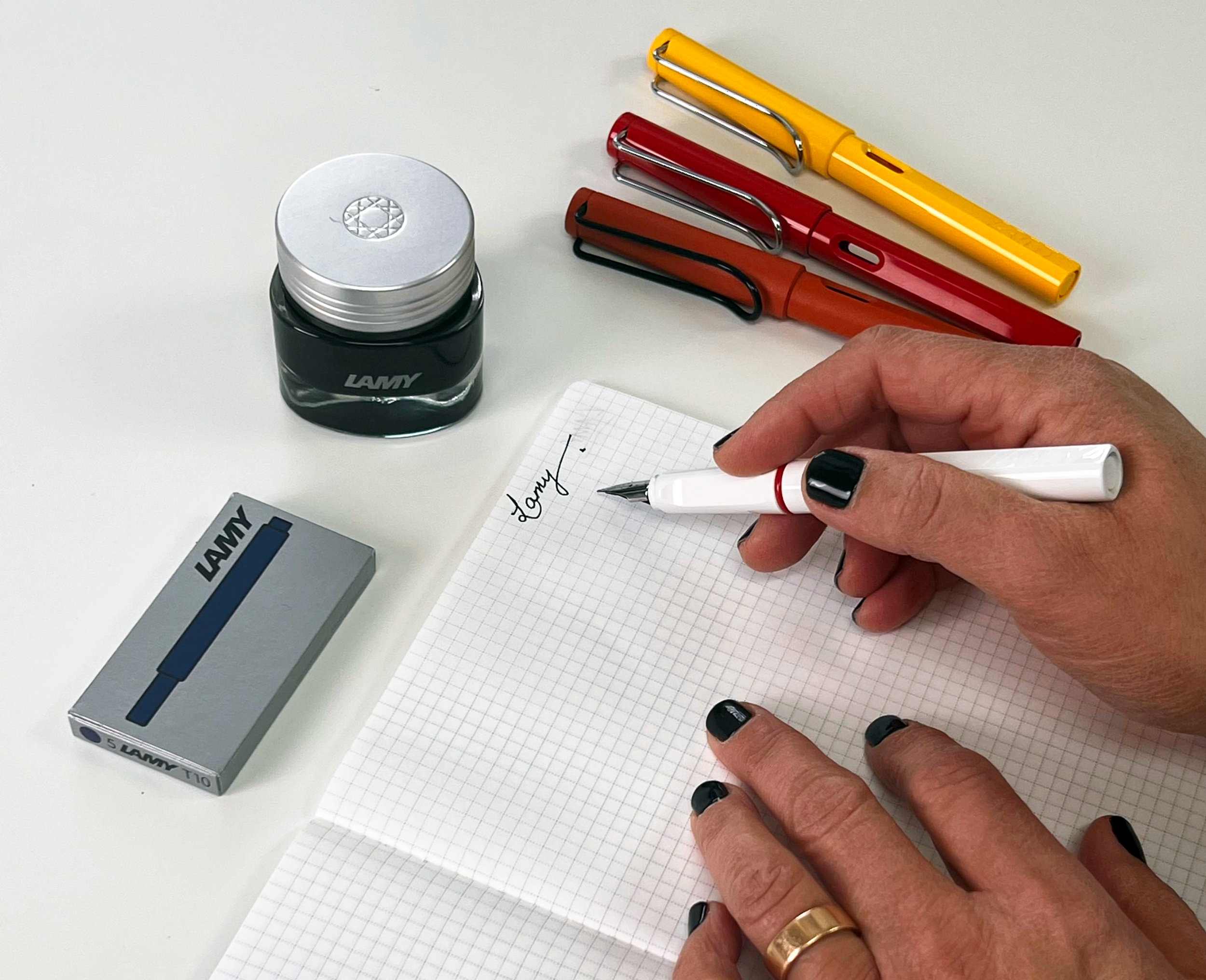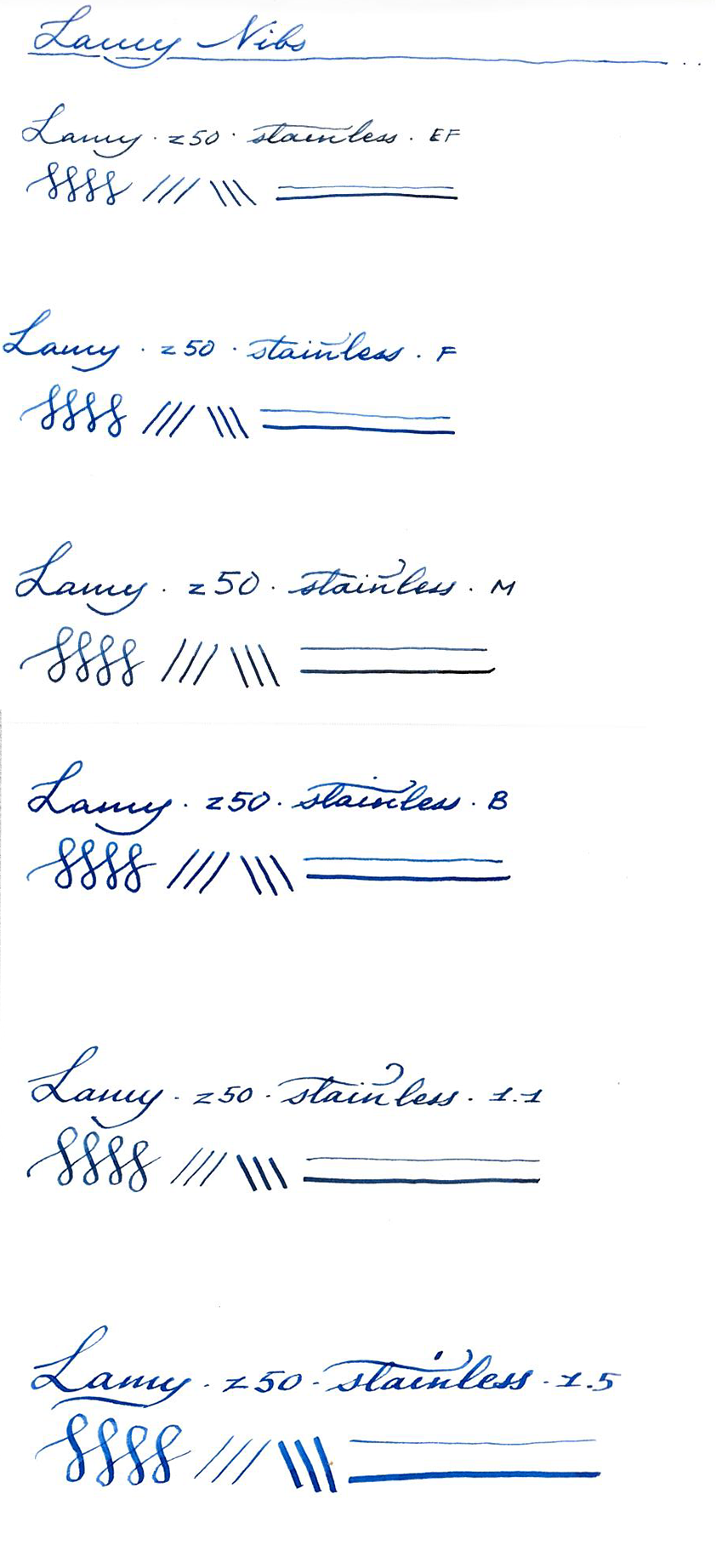How to Choose the Right Fountain Pen Nib Size
How do you choose the right fountain pen nib size for you? This is one of the most common questions for fountain pen beginners and intermediates. Well there is no wrong answer, but for the best fountain pen writing experience you want to choose the nib size that fits your handwriting, your preferences, and your uses! Everyone has their own preferences when it comes to writing, and it can be hard to know what you want without trying it first. At Phidon we are always happy to help you test things out in store before you buy, but if you can’t make it here that is ok - this guide is the next best thing!
First let’s get to know you. I will lay out a few easy questions that we would ask anyone looking for their perfect nib match for their pen. As you read along, think about your preferences and daily life and as I explain the different nib sizes I’m sure one will be calling to you.
What do you most often use your fountain pen for?
Do you typically use your fountain pen just for special occasions, like a nice note or card? Or are you using your fountain pen all day everyday? It is important to reflect on how you are using your pen, and if you prefer a distinct style or feeling to something more versatile. Also consider the paper type you are writing on. If you are using notebooks, do you often use a small pocket size A6 or a large A4? Personally, I switch between different pens depending on which notebook or paper size I am using!
What is your handwriting like?
Do you typically write very small, or are you more comfortable with big broad strokes? Are you a cursive writer or like block letters? Maybe it depends on the task, and you like to switch between neat and tidy to flourishing your handwriting! This is one of the easiest ways to match your needs to your nib - the size of your handwriting typically indicates what nib size would best suit you.
What is your typical handwriting speed?
Do you write with extreme precision and care? Or are you just trying to get the words onto the paper? In any case, you want to make sure that the ink coming out of your fountain pen can keep up with you!
What do you look for in an ink?
This is not always a question people consider but if you really value the look of the ink you put into your pen, you want to be able to see that when you write! It all depends on the person, and the task at hand. If you love a shimmery ink with a dual tone sheen, you want to be able to see that. For others, an ink is an ink and you just want it to get on the page and stay there. Do you find you smudge words when you write? (left handed writers know that issue)
Your answer to this question doesn’t just apply to the inks you intend to buy, but also to your nib choice!
Nib Sizes Explained
To get an idea of what nib options there are, we will go through 5 typical sizes; extra fine, fine, medium, broad, and stub/calligraphy. To see the comparison, we have used the Lamy z50 steel nibs that are found in most German made Lamy fountain pens including the very popular and beginner friendly Lamy Safari pen. It is important to note that every pen brand has a slight variation to their nibs. For example, Japanese nibs are typically a bit finer than their German counterparts. However, the notes below will give you a good idea of what each size has to offer!
Extra Fine (EF)
Extra fine is the finest and most delicate of them all. The benefits of the extra fine is it gives you very clean and precise lines, and the low ink flow allows for quick drying time and less prone to smudging. However, this thin nib does not deliver the most smooth writing experience, and does not have the ink flow for very quick and gestural writers.
This nib is best suited for those who write neatly, deliberately, and are in need of precision. This could be because you are using smaller notebooks or planners, or you like having thin consistent lines. If you are used to using 0.5mm tipped gel, needlepoint, or other thin lined pens, then an extra fine would be the closest match.
Fine (F)
Fine is one of the most common and versatile nibs available. A fine nib will give you a line between 0.5mm to 0.7mm, depending on the brand. Like the extra fine, it is best suited for handwriting that is on the smaller more precise side. However, this nib gives a smoother writing experience and can comfortably be used across many sizes of paper or notebooks. If you are a steady notetaker, or use your fountain pen on the daily, then the fine would work well for you!
Medium (M)
The medium is a good ‘middle of the road’ nib, where you are starting to get more ink flow out of the nib that allows more colour on the page, but not so much where things start to bleed together. However, the tradeoff for more ink flow is you may find yourself concerned with some smudging as the dry time is a bit longer, and you may experience some bleedthrough on cheaper paper. This size works well if your handwriting is anything but tiny, so switching from small writing for note taking, to larger writing for notes or signatures is not a problem for the medium nib.
Broad (B)
The broad nib is where you get a lot of ink flow, that will keep up with quick, gestural handwriting. If you have a beautiful sheen in your ink, or a shimmery finish that you want to see in your writing, then the broad is the place to start. It is important to note that more ink means your paper has to be fountain pen friendly, and be aware of the increased dry time. A broad nib on your pen feels incredibly smooth, and is very satisfying for dramatic handwriting or lettering.
Stub/Calligraphy Nib (1.1/1.5/1.9)
The stub or calligraphy style of nib has a distinctly different shape that gives it it’s flair. Instead of a round ball tip, it is a rectangular shape. It is described in numbers, with a higher number giving you a wider tip. This shape gives you beautiful line variation that you would notice in calligraphy writing.The stub nib offers a broad downstroke, and a thin horizontal stroke, which adds a calligraphic flair to your handwriting. This nib type is different from using a typical pen, but is an easy way to make your writing look more elegant. If you have an interest in lettering or calligraphy, then this nib would be a great starting place!
There are so many more nibs than the ones I’ve discussed here, but hopefully you have a better understanding of how the basics of fountain pen nibs relate to your personal style and life! If you have any questions about picking a nib or a fountain pen, you can always let us know in the comments below, via email, or on our instagram. Happy writing!






